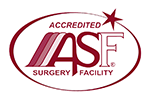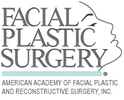The Delicate Art of Revision Plastic Surgery: Why Expertise Matters More the Second Time Around

A first attempt at plastic surgery doesn’t always result in perfection. Whether due to poor healing, surgical technique, or changing aesthetic goals, many patients find themselves considering a second—or even third—procedure to fix what went wrong. This is where revision plastic surgery steps in.
At the Beverly Hills Center, revision surgery is not just a procedure—it’s a deeply personalized, artistic, and technical process that demands far more than simply “trying again.” Under the expert hands of Dr. Ben Talei, a globally recognized dual board-certified facial plastic surgeon, revision surgery becomes a precise and compassionate effort to restore confidence, function, and natural beauty.
If your initial surgery didn’t deliver the result you envisioned, you are not alone—and there are solutions. Let’s explore what makes revision plastic surgery uniquely challenging, who qualifies, and how it can finally deliver the results you deserve.
Why Do Patients Seek Revision Surgery?
While primary cosmetic procedures aim to enhance or refine a facial feature, revision surgeries often need to correct complications or unfavorable results from previous work. The reasons patients seek revision plastic surgery vary, but the most common include:
- Overdone or unnatural results
- Asymmetry or contour irregularities
- Scarring or contracture
- Functional issues (like breathing problems after rhinoplasty)
- Incomplete or subtle improvements
- Shifting trends in beauty or aging over time
Emotionally, patients who seek revision surgery often carry disappointment or anxiety from their previous experience. It’s not just about looking better—it’s about healing from an aesthetic trauma.
Why Revision Surgery Is So Much More Complex
Revision surgery is significantly more difficult than primary surgery for one major reason: the unknowns. Scar tissue, altered anatomy, skin laxity, and structural support have all been changed by the initial procedure. In some cases, there’s less tissue to work with, reduced blood supply, or even internal distortion that must be carefully navigated.
Dr. Talei explains: “Revision surgery isn’t just about technique—it’s about judgment. You have to see beyond the current structure and envision what’s possible while respecting the unique limitations created by the first surgery.”
It’s why patients who are unsatisfied with previous cosmetic work should seek out a facial plastic surgeon with not just board certification, but specialized experience in complex revisions and a natural artistic eye.
Common Types of Revision Plastic Surgery at Beverly Hills Center
Revision Facelift
A facelift gone wrong can leave patients with a pulled, unnatural appearance or visible scarring near the ears. Dr. Talei’s signature Deep Plane Facelift technique allows him to restore youthful volume and facial balance in revision patients without the tension or tightness that often accompanies traditional methods. Using hidden incisions and refined lifting techniques, he focuses on repositioning deep facial structures rather than simply stretching skin.
Revision Rhinoplasty
Nose reshaping is notoriously challenging, and secondary rhinoplasty (or tertiary) is even more so. Patients may experience breathing difficulties, collapse of cartilage, or visible irregularities. Dr. Talei is known for using advanced grafting techniques and microsurgical precision to rebuild and reshape the nose with optimal function and aesthetics in mind.
Eyelid Revision Surgery (Blepharoplasty)
Overly aggressive eyelid surgery can result in a hollow or sunken appearance—or worse, issues with eye closure or dryness. Dr. Talei carefully evaluates the position and integrity of the eyelid tissues and applies advanced techniques to restore natural contours while preserving eyelid function.
Scar Revision & Skin Irregularities
Unfavorable scarring, skin puckering, or pigmentation changes can leave a lasting reminder of a past surgery. With both surgical and non-surgical options available, including lasers and injectable treatments, the Beverly Hills Center customizes each approach to minimize visible signs of prior work.
The Talei Approach: Combining Science, Art, and Empathy
What sets revision plastic surgery apart at the Beverly Hills Center is not just Dr. Talei’s technical skill—it’s the patient-first approach that guides every decision.
- Comprehensive Evaluation: Every patient begins with an in-depth consultation, where Dr. Talei listens closely to the patient’s goals, examines previous surgical results, and discusses realistic outcomes.
- No One-Size-Fits-All Plan: Revision surgery requires flexibility. Dr. Talei often creates multi-phase plans or incorporates non-surgical enhancements when appropriate.
- Natural-Looking Outcomes: His hallmark aesthetic is refinement without detection. Most patients don’t want to look “done”—they want to look rested, refreshed, and more like themselves.
- Cutting-Edge Techniques: From deep-plane lifting to customized fat grafting and advanced scar management, Dr. Talei stays at the forefront of facial plastic innovation.
Healing the Whole Patient
Revision surgery isn’t just about fixing a physical issue—it’s often about repairing the trust that was lost in the process. Many of Dr. Talei’s patients come in feeling disheartened, nervous, and hesitant. They’ve been told before that the results would be perfect. They may have been dismissed when they expressed dissatisfaction or concern.
That’s why Dr. Talei prioritizes education, honesty, and emotional support. If a revision is not in the patient’s best interest, he says so. If it is, he offers a plan that’s transparent, achievable, and grounded in experience.
Who Is a Good Candidate for Revision Plastic Surgery?
Ideal candidates include patients who:
- Are unhappy with previous surgical results
- Have healed fully (typically at least 6–12 months after initial surgery)
- Are in good physical health
- Have realistic expectations
- Are ready to invest in an expert-driven, carefully managed process
Because every revision case is unique, an individualized consultation is key. In some situations, additional imaging, photographs, or a staged surgical approach may be recommended to ensure safety and optimal results.
Frequently Asked Questions About Revision Surgery
- How long should I wait before considering revision surgery? Most surgeons recommend waiting at least 6–12 months after your initial procedure, depending on the type and complexity of the surgery. Healing needs to be complete before accurate assessment is possible.
- Will a revision surgery be more painful than the first? Not necessarily. Many patients find that the recovery is similar—or even easier—because they already know what to expect.
- What if I’ve already had more than one failed surgery? Dr. Talei routinely sees patients with multiple prior procedures. While more complex, outcomes can still be excellent with the right strategy and expertise.
- Can I combine revision surgery with new enhancements? Yes, in many cases. For example, patients revising a facelift may also add volume with fat transfer or improve skin texture with laser treatments.
Trust Your Face to a Specialist
Revision plastic surgery demands far more than a second chance—it requires a second level of skill. At the Beverly Hills Center, Dr. Ben Talei combines meticulous technique with deep compassion to help patients reclaim the beauty and confidence they deserve.
If you’re ready to move past disappointment and finally see the results you’ve been dreaming of, schedule a consultation with Dr. Talei. It’s time to turn the page—and let a true artist rewrite your aesthetic story.
















